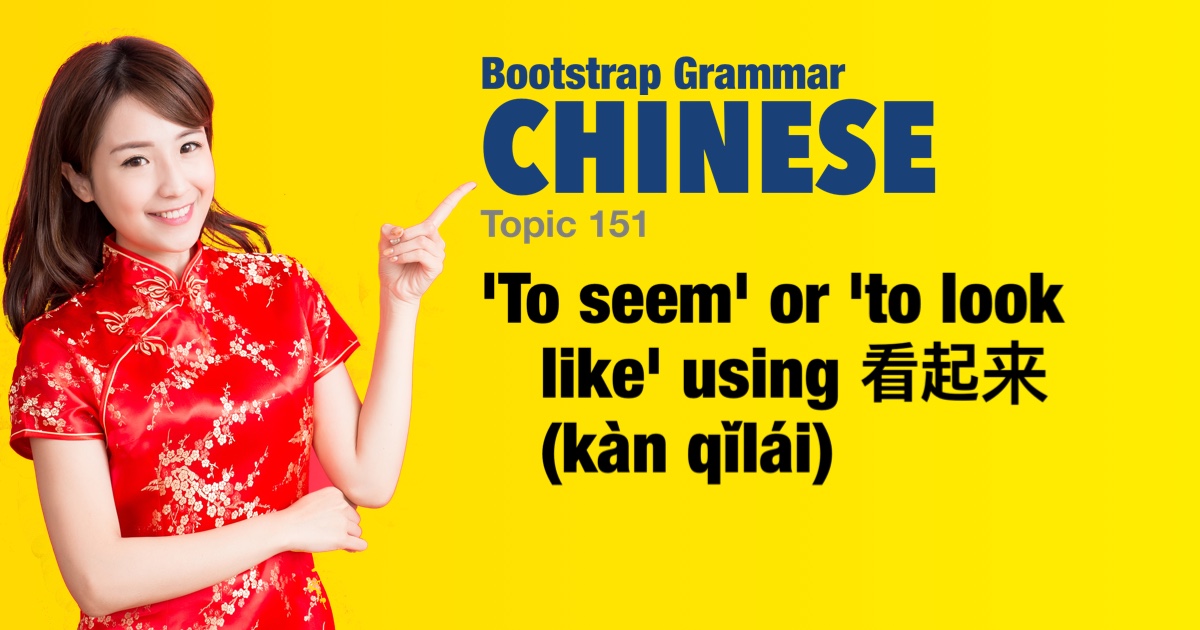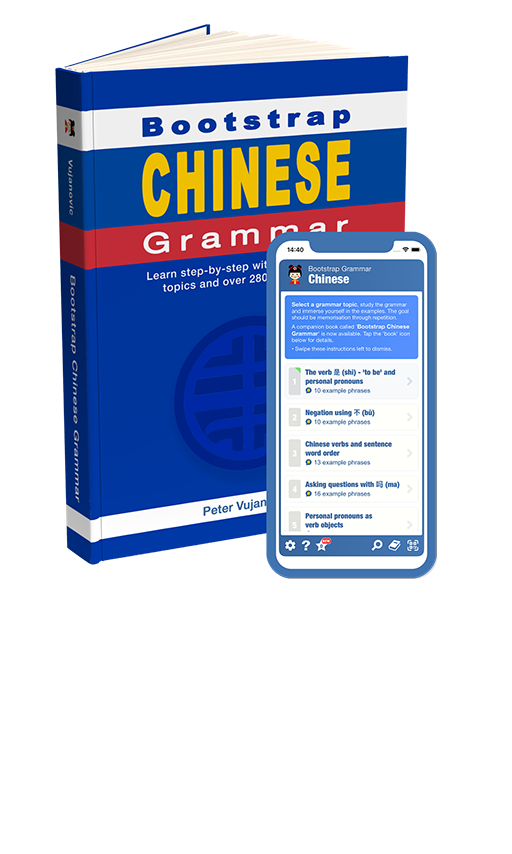Chinese grammar - 'To seem' or 'to look like' using 看起来 (kàn qǐlái) |
|||
|
|||
The Chinese expression 看起来 (kàn qǐlái) is used to describe appearances or impressions. It is like saying something 'seems' or 'appears' or 'looks like'. When making an explicit comparison in appearance (ie. '[A] looks like [B]') the word 像 (xiàng) is typically added. |
| Examples: | |
|
他看起来很累。
tā kànqǐlái hěn lèi. He looks tired.
|
|
|
她看起来很高兴。
tā kànqǐlái hěn gāoxìng. She looks happy. |
|
|
天气看起来要下雨。
tiānqì kànqǐlái yào xiàyǔ. The weather looks like it's going to rain. |
|
|
这本书看起来很有趣。
zhè běn shū kànqǐlái hěn yǒuqù. This book looks interesting. |
|
|
这个地方看起来很安静。
zhè ge dìfāng kànqǐlái hěn ānjìng. This place looks quiet. |
|
|
她看起来很自信。
tā kànqǐlái hěn zìxìn. She looks confident.
|
|
|
他看起来很着急。
tā kànqǐlái hěn zháojí. He seems anxious.
|
|
|
这个房间看起来很大。
zhè ge fángjiān kànqǐlái hěn dà. This room looks big. |
|
|
虽然他看起来很奇怪,但是大家都喜欢他。
suīrán tā kànqǐlái hěn qíguài,#dànshì dàjiā dōu xǐhuān tā. Although he looked strange, everyone liked him.
|
|
|
虽然这个菜看起来很好吃,但是我很饱。
suīrán zhè ge cài kànqǐlái hěn hǎochī,#dànshì wǒ hěn bǎo. Although this dish looks delicious, I am full.
|
|
|
她看起来像她妈妈。
tā kànqǐlái xiàng tā māma. She looks like her mother.
|
|
|
那朵花看起来像玫瑰。
nà duǒ huā kànqǐlái xiàng méigui. That flower looks like a rose.
|
|
|
这朵云看起来像老虎。
zhè duǒ yún kànqǐlái xiàng láohǔ. This cloud looks like a tiger.
|
|
 |
|



 The addition of
The addition of 